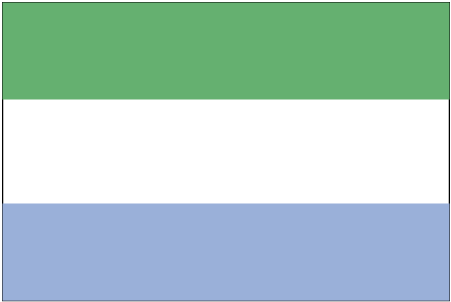For a more detailed listing
click hereThe British set up a trading post near present-day Freetown in the 17th century. Originally, the trade involved timber and ivory, but later it expanded to slaves. Following the American Revolution, a colony was established in 1787 and Sierra Leone became a destination for resettling black loyalists who had originally been resettled in Nova Scotia. After the abolition of the slave trade in 1807, British crews delivered thousands of Africans liberated from illegal slave ships to Sierra Leone, particularly Freetown. The colony gradually expanded inland during the course of the 19th century; independence was attained in 1961. Democracy is slowly being reestablished after the civil war (1991-2002) that resulted in tens of thousands of deaths and the displacement of more than 2 million people (about one-third of the population). The military, which took over full responsibility for security following the departure of UN peacekeepers at the end of 2005, has developed as a guarantor of the country’s stability; the armed forces remained on the sideline during the 2007, 2012, and 2018 national elections. In March 2014, the closure of the UN Integrated Peacebuilding Office in Sierra Leone marked the end of more than 15 years of peacekeeping and political operations in Sierra Leone. The government’s stated priorities include free primary and secondary education, economic growth, accountable governance, health, and infrastructure.
Source:
World Factbook 2020

| This product was added to our catalog on Monday 02 November, 2020.